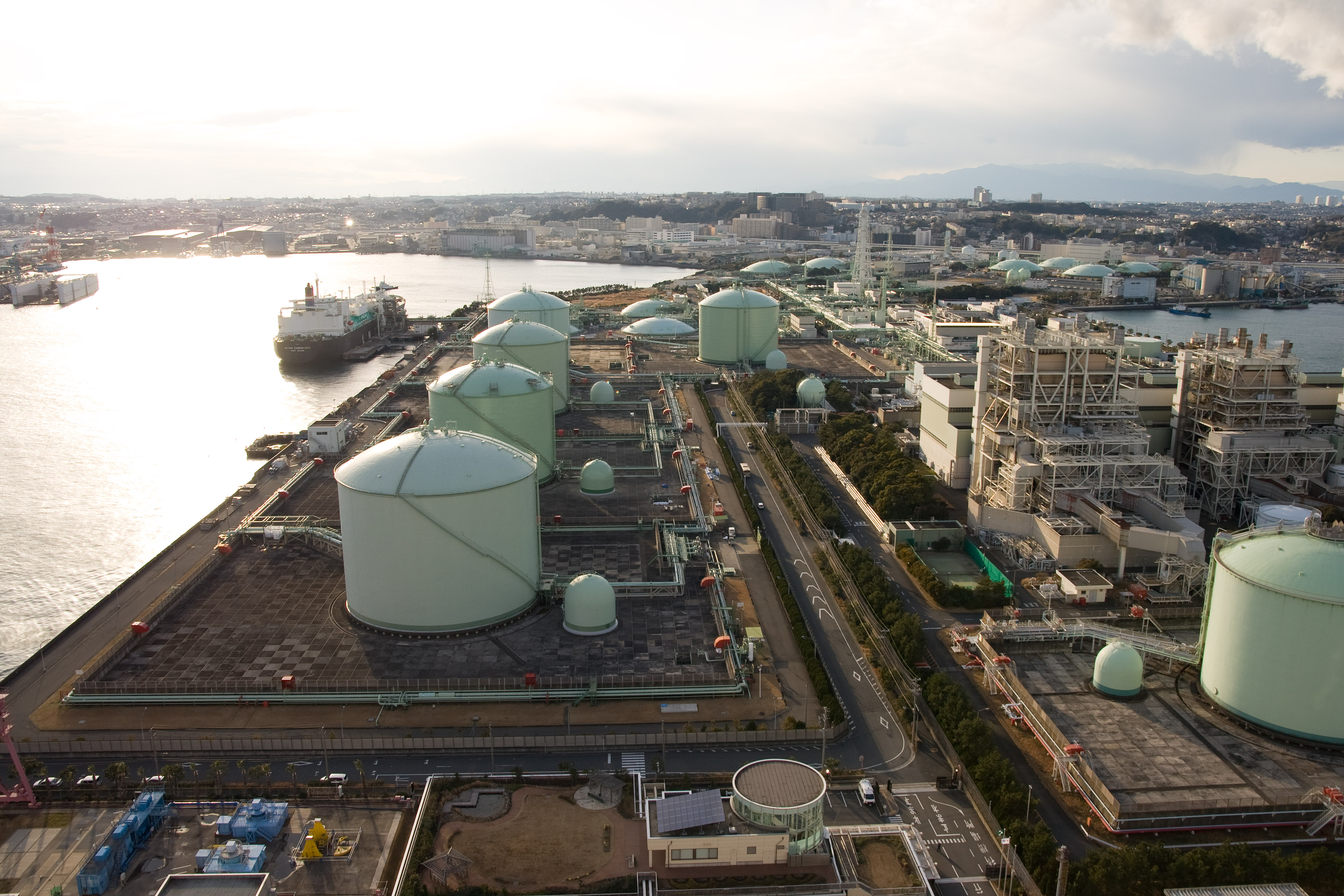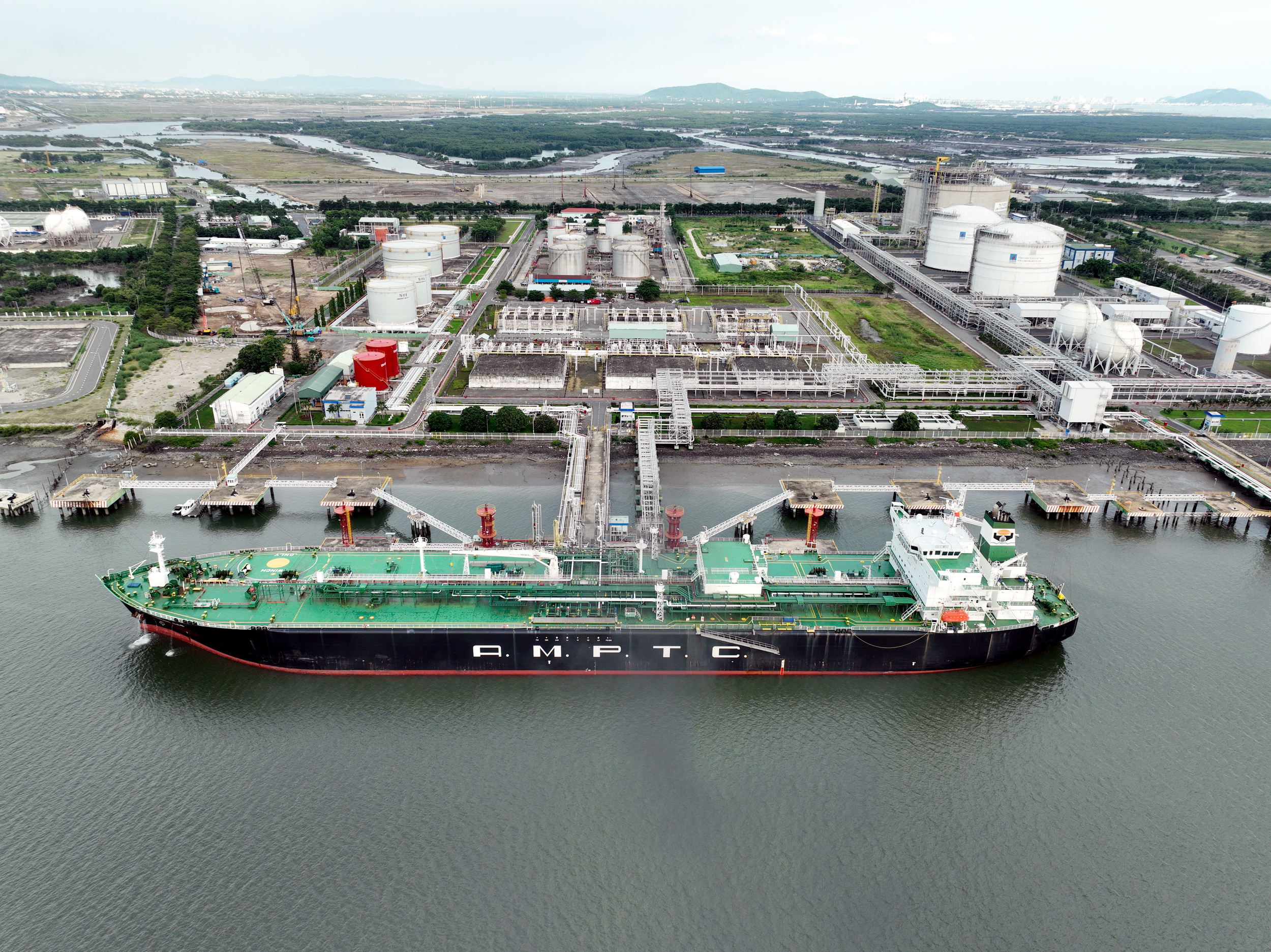LNG - The Future of Vietnam's Energy Sector
Liquefied Natural Gas (LNG) has been known since the late 19th century. Today, it has become a key player in the new energy trend. Vietnam is also one of the prominent countries in the global LNG market.
LNG - Key Player in New Energy Trend
LNG was experimented in the 19th century by Michael Faraday, a British chemist and physicist, with various gases, including natural gas.
LNG, primarily consisting of CH4 - Methane (94.3%), is colorless, odorless, non-toxic, and is kept at -162ºC. When in liquid form, it occupies only 1/600 of the volume in its gaseous state, at standard conditions (15°C, 1 atm). These features make it more convenient for storage and transportation to distant consumers, with a 2.4 times higher capacity than Compressed Natural Gas (CNG). Flaring LNG can create a high-temperature flame (about 1,880°C), leaving no residue after it evaporates. When burned, LNG produces less than 40% of CO2 emissions compared to coal and less than 30% compared to oil, making it the cleanest fuel among traditional ones.
In the 1870s, Karl Von Linde, a German engineer, built the first centrifugal air compressor in Munich. Construction of the initial prototype liquefied natural gas (LNG) facility began in West Virginia in 1912, starting operating in 1917.
In 1940, the first experimental LNG station was established in Cornwell, USA. Later, an industrial facility was built in Ohio to meet the peak demand for natural gas. The liquefaction capacity was 200 m3/day, and the regasification capacity was 115 m3/h to pump gas back into the network.
France was one of the first countries to import LNG. In the late 1950s, Gaz de France, the multinational electricity company of France, established maritime transportation routes for LNG. In 1963, three liquefaction units near Oran were put into operation, allowing the transportation of natural gas to the UK and France (Fos-sur-Mer Terminal). France's early involvement in LNG importation marked its entry into the global LNG market.
Recent advancements in liquefaction and shipbuilding technologies have facilitated the development of the LNG sector. Transporting gas over long distances has become feasible and economically viable.

Countries worldwide are heading towards using LNG as a significant alternative energy source
The USA is a typical example of utilizing natural gas for electricity production. According to EIA, in 2022, 40%, 20%, 21.5% and 18% of electricity in the U.S. came from respectively natural gas, coal, renewables, and nuclear energy. Many other countries have also shifted to natural gas: China 10%, Japan 21.3%, and South Korea 18% of their total energy consumption.
With the strong growth in LNG demand, Wood Mackenzie has predicted that an additional 100 million tons of LNG production capacity will be needed to meet demand by the mid-2030s, a 25% increase from the current supply. Most of this demand will occur in Asia, where Vietnam is a significant player.
Bringing LNG into Vietnam
In Vietnam, as of present, PV GAS is the first and only entity in Vietnam certified by the Ministry of Industry and Trade to export and import LNG.
Especially, after more than 3 years, PV GAS completed the first, largest, and most modern LNG facility in the country - the 1 MMTPA Thi Vai LNG Terminal with a capacity of 180,000 m3, 2 re-gasification units with a maximum capacity of 171 tons/hour, a truck loading station, a low-pressure gas distribution station, connecting pipeline, a centralized control center for the entire project operation, fire protection systems, etc.
The terminal has fully met domestic and international standards and requirements for safety and operation through in-depth assessments, receiving high praise for its detailed design and feasibility. Therefore, the process of receiving the first LNG vessel in Vietnam and commissioning was accomplished earlier than expected, without any technical risks.

Vietnam has begun to integrate into the global energy trend
PV GAS will be continuously supplying LNG to low-pressure gas consumers effectively. It is expected that Thi Vai LNG Terminal will supplement LNG for consumers in the Southeast region and compensate for the gas shortage in the country from 2024 onwards.
In addition to the construction of the 1 MMTPA Thi Vai LNG Terminal, PV GAS is also investing in the construction of Son My LNG Terminal with a planned total capacity of up to 6 MMTPA. In light of that, PV GAS' LNG infrastructure will fundamentally meet the energy needs for the Southern region in the future.
PV GAS is striving step by step to realize its strategic plan. With meticulous and careful investment, this LNG terminal project series is expected to demonstrate PV GAS' capability to meet the market's demands, acting as a lever to achieve goals and help Vietnam make its mark in the regional and global markets. In the not-so-distant future, LNG could be applied in various sectors in Vietnam, thereby meeting the expectations and commitment of the Government to achieve a Net Zero greenhouse gas emission.